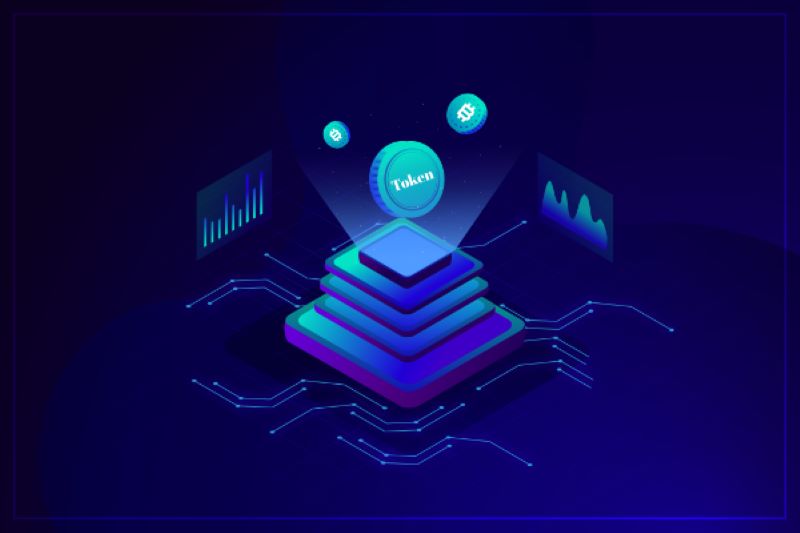What is Data Tokenization? This game-changing concept is redefining how organizations secure sensitive information. By converting critical data into unique tokens, businesses bolster security and ensure regulatory compliance. As cyber threats grow, understanding data tokenization is essential for protecting assets and customer information. Ready to uncover its impact? Let’s dive in!
What is Data Tokenization
Basic Concept of Data Tokenization
Data tokenization is an information security method where sensitive data is replaced with unique identifiers called tokens. These tokens do not contain the actual sensitive information and cannot be used to retrieve the original data without access to a secure system.
The purpose of tokenization is to minimize the risk of data breaches during storage and processing of sensitive information, while still keeping the data usable in business processes. This is the fundamental answer to the question, “what is data tokenization?”

Operating Principle of Data Tokenization
The operating principle of data tokenization is based on replacing sensitive data with tokens during processing and storage. When data is sent to the system, it is converted into a token and stored in a secure database. The original data is either deleted or securely stored elsewhere. When access to the original data is needed, the token is converted back through a decryption process, typically performed by a strictly controlled security system. This ensures that sensitive information is not stored or processed directly in vulnerable systems.
Difference from Encryption
While both tokenization and encryption are designed to protect sensitive data, they differ in several key aspects:
- Method of Protection: Encryption transforms data into an unreadable format using specific algorithms, enabling access to the original data only through a decryption key. This means that anyone with the key can decrypt and view the original information.
- Nature of Tokens vs. Encrypted Data: In contrast, tokenization replaces sensitive data with tokens that have no value outside of the tokenization system. Even if an attacker gains access to the token database, they cannot reconstruct or retrieve the original data without access to the secure tokenization system.
- Security Implications: Due to its design, tokenization is often regarded as a more secure option for protecting sensitive data. While encryption secures data in transit and at rest, tokenization minimizes the risk of exposure by ensuring that sensitive data is not stored or processed in its original form.
How to Implement Data Tokenization
Implementing data tokenization requires a clear process and a combination of tools and security technologies to ensure sensitive information is effectively protected. Understanding what is data tokenization is the first step towards successful implementation.

Process of Implementing Data Tokenization
The process of implementing data tokenization typically involves the following main steps:
- Identifying sensitive data: The first step is to identify which types of data need to be tokenized, such as credit card information, customer personal data, or medical information. This helps the organization understand the associated risks and determine the necessary level of tokenization. Understanding what is data tokenization and its purpose is crucial in this initial phase.
- Choosing a tokenization model: Organizations can choose from various tokenization models, including static tokenization and dynamic tokenization. The static model maintains a single token for each original data element, while the dynamic model can generate new tokens for each transaction session.
- Establishing a security system: A tokenization system requires a robust security infrastructure to store and manage tokens as well as the original data. This system typically includes encryption methods and strict access controls.
- Implementation and integration: After setting up the system, the organization will deploy the tokenization solution and integrate it into existing business processes. This includes training staff on how to use the new system and ensuring that all relevant applications work effectively with the tokenization solution.
- Monitoring and maintenance: Finally, the organization needs to continuously monitor and maintain the tokenization system to ensure optimal performance and protect sensitive information. This includes updating security systems, conducting regular audits, and reassessing the tokenization process when there are changes in regulations or technology.
Tools and Technologies for Data Tokenization
Some tools and technologies commonly used in implementing data tokenization include:
- Tokenization software solutions: Many technology providers offer tokenization software that can be integrated into an organization’s existing system. This software typically supports both static and dynamic tokenization, while providing additional security features.
- Database management systems: Modern database management systems often have the capability to support tokenization, allowing for secure and efficient token storage. Integrating tokenization into the database helps reduce the complexity of managing sensitive information.
- Encryption technology: Although tokenization is not the same as encryption, it is often combined with encryption technologies to enhance security. Encryption can be used to protect the original data before it is tokenized.
- Monitoring and reporting tools: These tools help track and analyze the tokenization system’s activity, providing reports on performance and security, thereby assisting the organization in better risk management.
By following these steps and utilizing appropriate tools and technologies, organizations can successfully implement data tokenization, providing a robust layer of protection for sensitive information. Understanding what is data tokenization and its implementation process is crucial for organizations seeking to enhance their data security posture.
Challenges in Implementing Data Tokenization
While data tokenization offers numerous benefits in protecting sensitive information, its implementation also faces various challenges. Organizations need to carefully consider these factors and plan meticulously to overcome obstacles during deployment. Understanding what is data tokenization is essential, but so is recognizing the potential hurdles in its implementation.

- Implementation Costs: One of the biggest challenges in adopting data tokenization is the initial investment cost. Organizations need to invest in software, hardware, and employee training to implement a tokenization solution. This cost can be substantial, especially for small and medium-sized enterprises, making the decision to adopt more difficult.
- Compatibility with Existing Systems: Integrating tokenization into existing systems can be challenging. Organizations may have to make significant changes to their IT infrastructure to ensure that all applications and systems can interact with the tokenization solution. This compatibility can sometimes cause disruptions in daily operations.
- Training and Process Changes: For successful data tokenization implementation, employees need to be trained on how to use the new system and understand the associated processes. This not only takes time but also requires a significant effort from management to adjust workflows and company culture, which may lead to resistance from employees.
- Management and Maintenance: After deployment, managing and maintaining the tokenization system is also a considerable challenge. Organizations need a dedicated team to monitor system performance, update software, and implement necessary security measures. This can create an additional burden for the IT and management departments.
- Risk to Data Integrity: While tokenization helps protect sensitive information, if not implemented correctly, it can lead to data loss or corruption. Mismanagement of tokens can cause major problems in data recovery or information processing, impacting business operations. Therefore, understanding what is data tokenization also involves understanding the importance of proper implementation and management to maintain data integrity.
- Regulations and Compliance: Data security regulations are becoming increasingly stringent, and organizations need to ensure that their tokenization solutions comply with current standards and regulations. This can require significant time and resources to maintain compliance throughout operations.
- User Perception: Finally, user acceptance of the tokenization system is also an important factor. Some people may not be familiar with using tokens instead of the original sensitive data, leading to uncertainty or concerns about security. Educating users and communicating the benefits of tokenization is necessary to achieve acceptance and success.
Understanding “What is Data Tokenization” is essential for organizations seeking to enhance their data security and management practices. By replacing sensitive information with tokens, businesses can significantly reduce the risks associated with data breaches while maintaining compliance with regulatory standards.
As the demand for secure data management solutions continues to grow, the implementation of data tokenization will play a pivotal role in safeguarding sensitive information across various industries. For more insights on this topic, be sure to check out the latest updates from Blockchain Global Network.

RELATED POSTS
Impact of martial law in South Korea on the financial market
On December 3, 2024, South...
Can my Phantom Wallet be hacked?
Wondering, “Can my Phantom Wallet...
How Companies Using Blockchain Technology Are Revolutionizing Operations
Curious about how “Companies Using...
Infrared Finance: Leading PoL Staking on Berachain
Infrared Finance has emerged as...
GRVT Airdrop – The 2 Most Important Expectations
The GRVT Airdrop offers a...
Mushroom Warrior Bot Airdrop: Easy Tasks, Big Rewards
The Mushroom Warrior Bot Airdrop...
Essential Blockchain Technology Example Cases You Should Know
Blockchain technology example is everywhere,...
What is Dapp? The future of U2U decentralized applications
Are you ready to explore...
Preparing Blockchains: Quantum Computing’s Inevitable Impact
Protecting blockchain from quantum attacks:...
Who has Andrew Tate’s Crypto Wallet?
Who has Andrew Tate’s Crypto...
The Backwoods Game: Is it the next big hit on Solana?
With engaging action gameplay, stunning...
Reya Network Airdrop – Guide to Participate and Profit Before Launch
Do you want to profit...
Is Ledger Nano X Safe? Ledger Nano X vs Ledger Nano S
The Ledger Nano X is...
Nous Research Secures $50M for Decentralized AI on Solana
Nous Research, a trailblazing startup...
Blockchain for supply chain tracking explained
Modern supply chains are often...
Kishu Inu Coin: A guide to investing in this Meme Token
Discover Kishu Inu Coin, a...